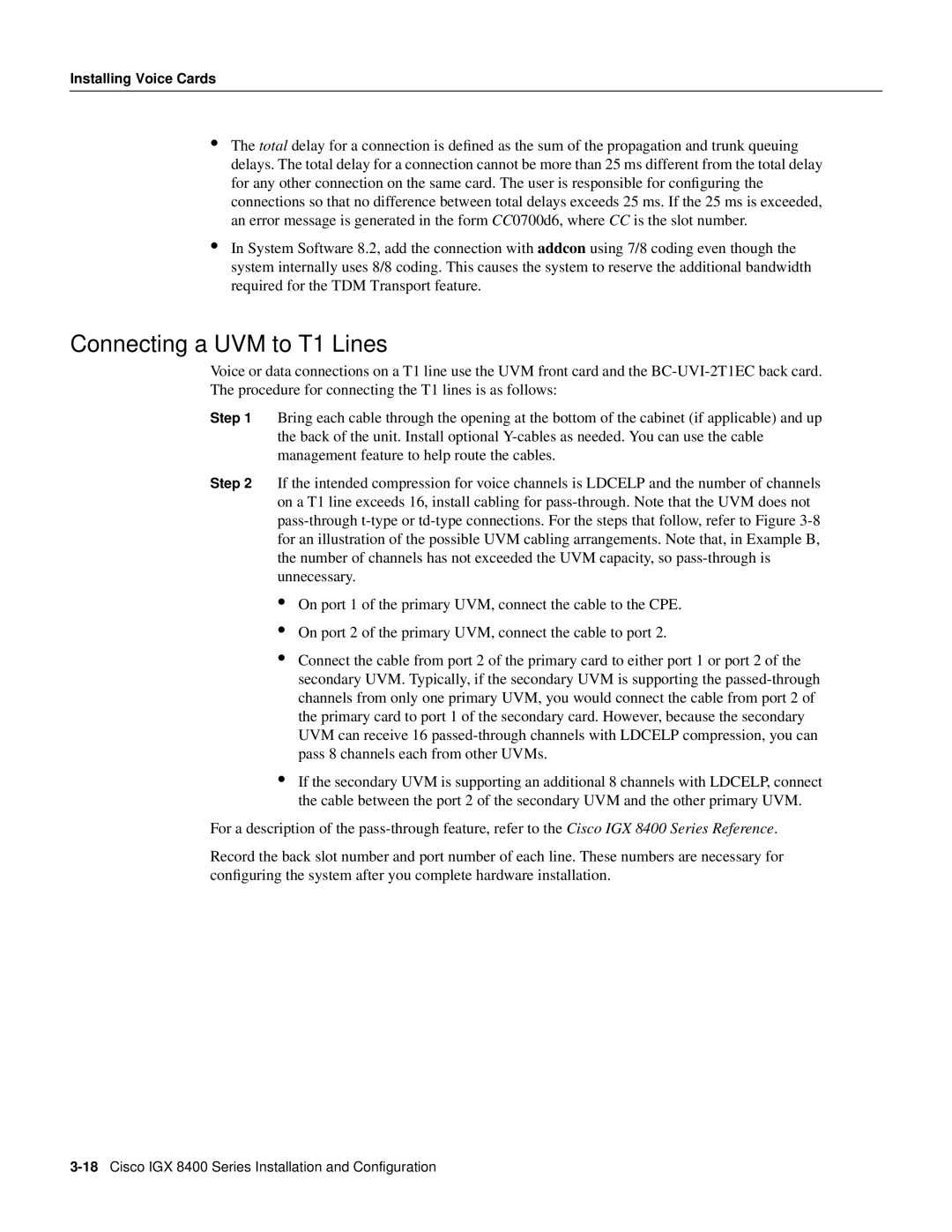Installing Voice Cards
•The total delay for a connection is defined as the sum of the propagation and trunk queuing delays. The total delay for a connection cannot be more than 25 ms different from the total delay for any other connection on the same card. The user is responsible for configuring the connections so that no difference between total delays exceeds 25 ms. If the 25 ms is exceeded, an error message is generated in the form CC0700d6, where CC is the slot number.
•In System Software 8.2, add the connection with addcon using 7/8 coding even though the system internally uses 8/8 coding. This causes the system to reserve the additional bandwidth required for the TDM Transport feature.
Connecting a UVM to T1 Lines
Voice or data connections on a T1 line use the UVM front card and the
Step 1 Bring each cable through the opening at the bottom of the cabinet (if applicable) and up the back of the unit. Install optional
Step 2 If the intended compression for voice channels is LDCELP and the number of channels on a T1 line exceeds 16, install cabling for
•On port 1 of the primary UVM, connect the cable to the CPE.
•On port 2 of the primary UVM, connect the cable to port 2.
•Connect the cable from port 2 of the primary card to either port 1 or port 2 of the secondary UVM. Typically, if the secondary UVM is supporting the
•If the secondary UVM is supporting an additional 8 channels with LDCELP, connect the cable between the port 2 of the secondary UVM and the other primary UVM.
For a description of the
Record the back slot number and port number of each line. These numbers are necessary for configuring the system after you complete hardware installation.
